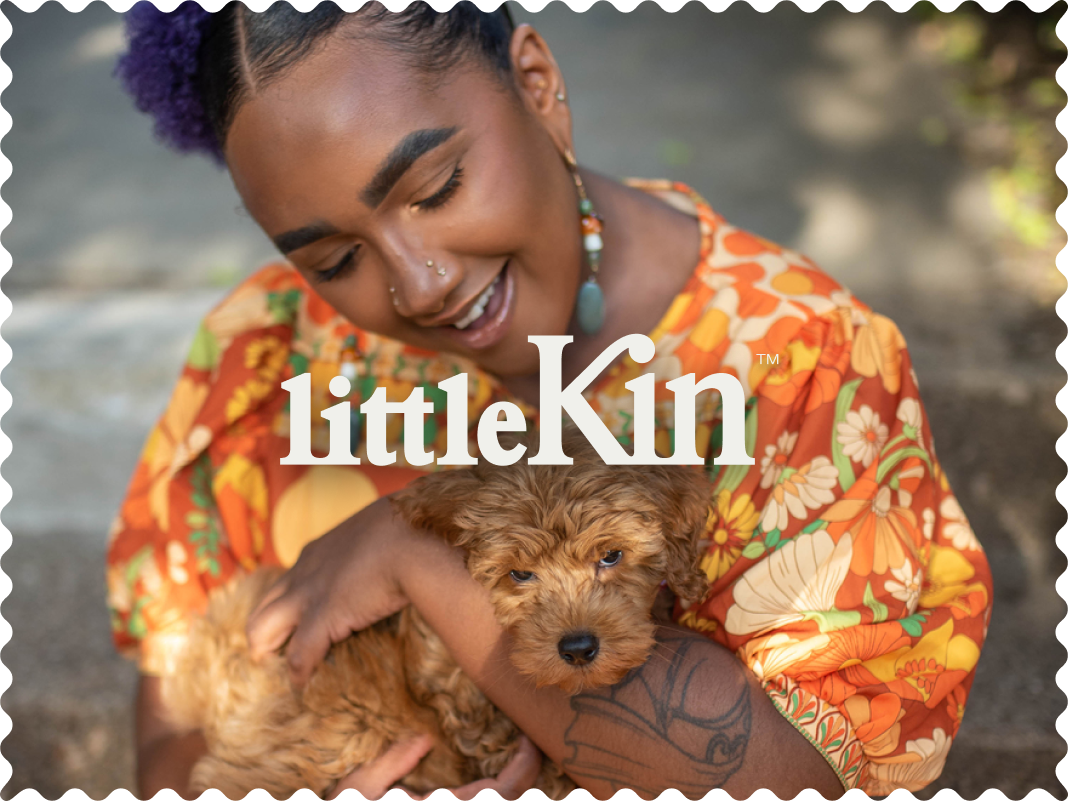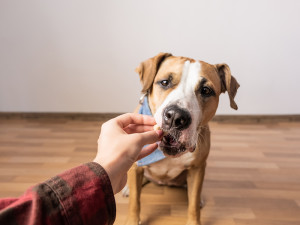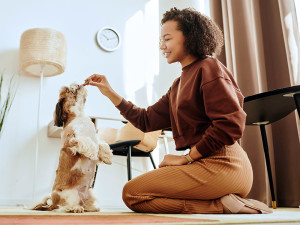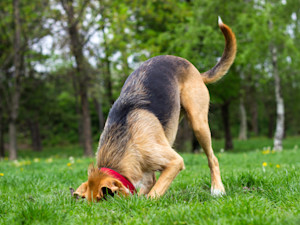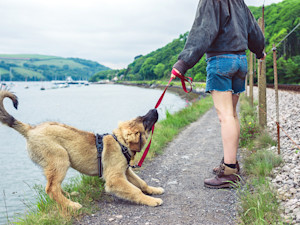Why Your Dog Won’t Eat Treats Outside
How are you meant to train them now?

Share Article
You’ve read all the training advice, created yourself a plan and are ready to start the journey to stress-free walks with your dog. Then you encounter a huge issue: your dog won’t eat the treats you’re offering them outside. Now how are you supposed to train them?
Don’t panic for all is not lost. First, you need to figure out why your dog doesn’t want to take treats. Then you can teach them to eat outside or find a different reward to use. Here’s how to get your training back on track if your dog won’t eat treats outside.
All the reasons why your dog doesn’t want treats
There are so many reasons why dogs refuse food outside. It’s not that they’re not motivated by food in general – every living creature is arguably food-motivated otherwise they wouldn’t survive.
How much do you spend on your pet per year?
Here are some things to consider:
Your reward isn’t actually that rewarding
To strengthen a behaviour, a reward (or ‘reinforcer’, as trainers and behaviourists call it) has to be something that your dog wants at that time. So you may need to play around with the kinds of food you’re using as a reward and even how you deliver that reward. For example, some dogs find taking even high-value treats from your hand boring but can’t get enough of searching for them if you drop them on the ground.
Your dog has some big feelings
Stress comes in two forms: eustress, which is a positive kind such as the kind that comes from excitement, and distress, which is feeling scared or worried. But both kinds of stress can build up inside the body and lead to things such as digestion slowing down or stopping altogether. The purpose of that? So that your dog can be ready to spring into action if they need to.
Your dog is full
If someone offers you your favourite bar of chocolate after you’ve eaten a three-course meal, you might just turn them down. So it makes sense that the same can occur for your dog. While you definitely don’t want to starve your dog to make them more likely to take treats, think about when they’ve eaten a meal or chew versus when you’re training them.
Your dog’s distracted
With some dogs, this can be obvious, like another dog walking close by. For others, it may not even be a major distraction. Even a leaf blowing in the wind can be enough to distract some. And don’t forget all of the scents that they’re experiencing.
Your dog’s just tired
Are you on minute 45 of your training session? Or are you asking your dog to do something they find difficult after a long walk? They may just be tired and more motivated to sleep than eat. Short and sweet is always best when it comes to dog training.
There’s an underlying medical issue
A dog’s health can significantly influence their behaviour and their ability to learn. If your dog’s behaviour has changed or you feel that their refusal of treats is odd, your best bet is to ask your vet to give them a thorough examination. Even more so if your dog’s general appetite seems to have declined or they’re generally a ‘fussy’ eater.
Eating has become a risky behaviour
Although well-meaning, if we try to lure or bribe our dogs to do something they don't want to do with treats, those treats can become ‘poisoned’. That means your dog has learnt to associate food with something unpleasant. So when the treats next come out, all they’re thinking about is that negative experience. Keep repeating that and you can eventually end up with a dog who refuses to take food from you at all.
Can I teach my dog to eat treats on walks?
Yes, you absolutely can! It sounds weird but eating is a behaviour and therefore something we can train. Here’s how:
Figure out what your dog’s favourite treats are. Grab a muffin or cupcake tray and around five treat options. Put small pieces of each food in different sections. Then let your dog at it and note down which food they went for first and the order they ate the other treats in. Repeat this a few times to find a pattern and you should start to see which is their favourite and which they turn their nose up at. Use the ones they love the most for their outdoor training.
If they won’t take food outside at all, then start nice and easy. Have their favourite treats ready, pop them on the lead and start by the front door with the door open. Drop a few titbits onto the ground and see what they do. Try to avoid coaxing them and let them take their time. After a minute or so, close the door and give them something they like, whether that’s praise, play or a chew. Repeat this a handful of times a day until they’re comfortable with eating by the door.
Then move to just outside the door and repeat the same exercise. You can even try feeding them by hand a couple of times.
Gradually move further out but don’t rush things!
When they can take food easily in quiet places near your house, start to ask for behaviours they know well and reward them with a treat. Keep it short and sweet.
Then start to practice eating around distractions. Start further away just as you did with the outside world then get closer as they’re doing well.
Don’t forget you can deliver the food in a more exciting way, too. So if your dog wants to play with another dog, be more active. Why not throw the treat so they get to chase it rather than just handing it straight to their mouth?
There’s always an alternative
Food isn’t the be all and end all. There’s lots of ways you can reward your dog. Think about everything they like. This could be activities like playing in puddles, chasing things or even just having a good old sniff. You can also consider what they were bred to do – herding, retrieving, hunting to name a few.
If you get a little creative, you can use these as rewards in their training. Say you’d like your dog to focus on you but they want to follow the scent of a squirrel. How about rewarding even just a couple of seconds of focus at first with some freedom to follow that scent? Then build that focus duration up little by little.
You can do a similar thing if they really want to say hi to another person or dog. Ask or wait for a behaviour that you like and reward them by allowing them to interact, rather than offering a treat. Of course, they can’t always say hello so you’ll need an alternative sometimes. Perhaps they can have a good play with you if they can’t play with the dog across the field.
Show them that you’re the key to getting what they want and watch their training flourish.
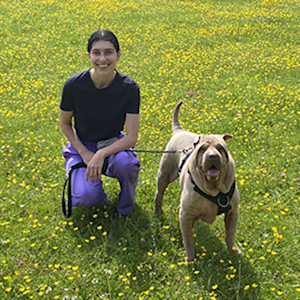
Lauren Sharkey
Lauren Sharkey is a journalist-turned-dog behaviourist who runs Winnie’s Worldopens in new tab: a training and behavioural company that aims to give dogs and their pet parents the life they deserve. She shares her life with a Shar Pei named Winston, who is the inspiration for her career change along with being her biggest love (and challenge!).
Related articles
![Dog gently takes treat from owner's hand]()
How to Teach Your Dog to Take Treats Gently
And save your skin
![Side view portrait of black young woman playing with cute Shih Tzu dog and doing dog training.]()
How to Use Dog Treats For Training
Here’s your guide to how treats can help as your new pup is learning all the things
![a dog with a red collar has it's head in a hole in the ground]()
Why Does My Dog Bury Treats in the Garden?
Let’s dig in...
![a picture of a big fluffy puppy biting their lead by the side of a lake. Their owner in jean shorts]()
Puppy Lead Training 101
This article (and a whole bunch of patience) is all that stands between you stepping out with your new puppy into the wide world
